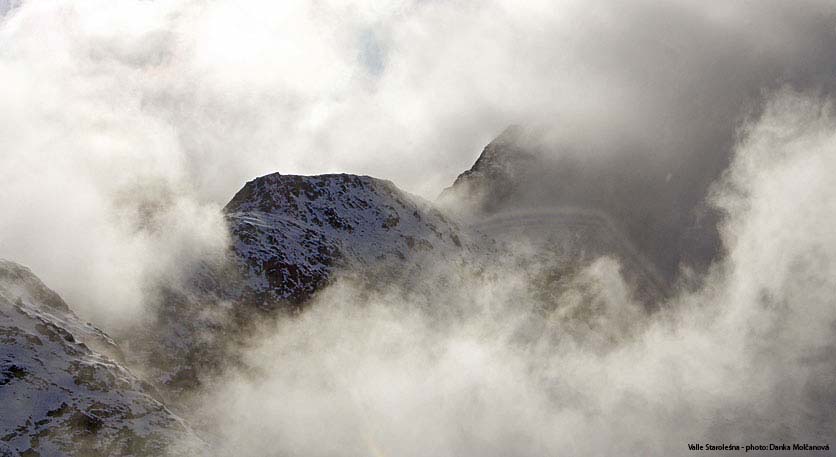| |
TIME AND SPACE IN THE HIGH TATRAS
AFTER THE OFFICIAL END OF THE WINTER SEASON
Paweł Grocholski
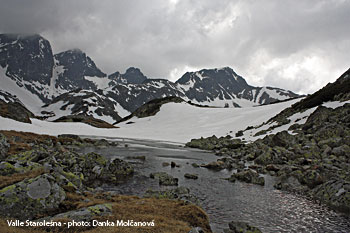 The problem of time and space has been neglected by contemporary philosophers. The modest Anglo-Saxon thinkers have let the biologists and physicists handle it, while the continental maximalists with their typical arrogance have concentrated on other issues. Meanwhile, for Tatran mountaineers and climbers the most important task is to deal with time and space. Firstly, in order to be in the mountains, because if you don’t manage to do that then urban space and time will stop you from being among the mountain climbers. Later, when you are in the mountains, it can happen that time together with space can decide capriciously about the fate of your expedition, taking on the form of merciful or spiteful gods. This is why the question about what time and space are is entirely practical and from here I shall start to describe my experience. The problem of time and space has been neglected by contemporary philosophers. The modest Anglo-Saxon thinkers have let the biologists and physicists handle it, while the continental maximalists with their typical arrogance have concentrated on other issues. Meanwhile, for Tatran mountaineers and climbers the most important task is to deal with time and space. Firstly, in order to be in the mountains, because if you don’t manage to do that then urban space and time will stop you from being among the mountain climbers. Later, when you are in the mountains, it can happen that time together with space can decide capriciously about the fate of your expedition, taking on the form of merciful or spiteful gods. This is why the question about what time and space are is entirely practical and from here I shall start to describe my experience.
My time during the winter was organised in a small space. Each day I went to the slope about a kilometre from my house, I taught people to ski, then I prepared the slope for the next day and went home in the evening. Sometimes I wondered where all these people who want to learn to ski come from; isn’t it true that a long time ago everyone had to learn to ski? Who are these people getting out of their cars as if from a space ship or a time machine?
The season finished at the end of March – the tourists went home and their place was taken by snow. There was a lot of snow. The only place safe from avalanches, after being compressed by snowgroomers, was Kasprowy Wierch, from where I admired the white inaccessible mountains. Finally, along came some sunny days and with them excellent conditions for skiing and climbing. And it was here that the first, basic problem occurred – is time flowing, and if it is flowing, in which direction: from the past to the future, or the other way from the future to the past? Maybe it seems to you that the question is artificial or outdated, but if we say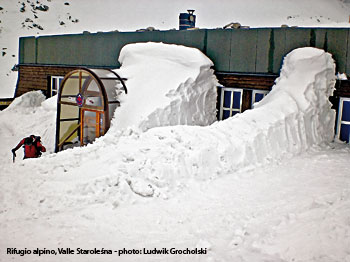 that “finally, along came some sunny days” we assume that time is flowing; in addition we assume that it is flowing towards us. This type of thesis is dangerous or at least sad because it involves recognising determinism. Future events exist somewhere in the space-time continuum and the only thing we can do is wait until they come along, like sunny days and better climbing conditions. It means that the slopes that we will ski down next year have already been formed, and they are just waiting to be updated in our memory. It’s nice to assume that we are flowing along with time, then we can believe that we are the creators of future events. Unfortunately, the language custom that requires us to speak of “coming storms”, the “approaching day” and so on are worrying. It could mean that as a result of the accumulation of an unimaginable number of human experiences a way of thinking was created, reflected in language, which informs us that time is flowing towards us. It doesn’t change, however, the fact that such a view is at variance with intuition. This is why it is worth thinking more precisely about the hypothesis that time is flowing together with us and not against us. Here, the ancient philosophers thought up a range of paradoxes. Apparently, time cannot exist because none of its parts exist, even the present cannot be regarded as existing – it doesn’t have permanence. In addition to this, we are not able to establish when the present finishes: it is definitely not in the present, which exists as long as it exists, also not in the next moment, because in the present there are not any next moments, and not in the previous moment, because reality would have to disappear. It can only be added that our inability to define the time pleased ancient sceptics. that “finally, along came some sunny days” we assume that time is flowing; in addition we assume that it is flowing towards us. This type of thesis is dangerous or at least sad because it involves recognising determinism. Future events exist somewhere in the space-time continuum and the only thing we can do is wait until they come along, like sunny days and better climbing conditions. It means that the slopes that we will ski down next year have already been formed, and they are just waiting to be updated in our memory. It’s nice to assume that we are flowing along with time, then we can believe that we are the creators of future events. Unfortunately, the language custom that requires us to speak of “coming storms”, the “approaching day” and so on are worrying. It could mean that as a result of the accumulation of an unimaginable number of human experiences a way of thinking was created, reflected in language, which informs us that time is flowing towards us. It doesn’t change, however, the fact that such a view is at variance with intuition. This is why it is worth thinking more precisely about the hypothesis that time is flowing together with us and not against us. Here, the ancient philosophers thought up a range of paradoxes. Apparently, time cannot exist because none of its parts exist, even the present cannot be regarded as existing – it doesn’t have permanence. In addition to this, we are not able to establish when the present finishes: it is definitely not in the present, which exists as long as it exists, also not in the next moment, because in the present there are not any next moments, and not in the previous moment, because reality would have to disappear. It can only be added that our inability to define the time pleased ancient sceptics.
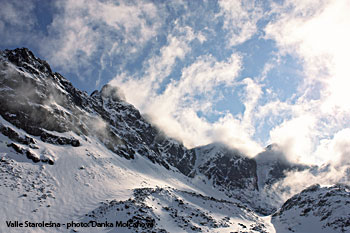 Unfortunately, scepticism does not provide an answer to the question of interest to us; how to handle the terror of time and space? Why, when after a day’s climbing and a difficult descent ahead of us, the sun sets so quickly that we don’t even have time to tidy up our equipment, and the moon rises so slowly that it’s possible to get lost? At the end, with difficulty, the path to the mountain hostel goes on forever, and the valley expands and changes into pure space. Can we define it? Optimists claim that adequate definitions allow us to control things. A tempting perspective and a lust for power! But how to deal with the questions whether space is real, or is it just a mental artefact? Is it an object made up of the points or the objects immersed in it, or is it only and exclusively the relationship between the objects? Also, does space have an end, and if so, what is at the end? Unfortunately, scepticism does not provide an answer to the question of interest to us; how to handle the terror of time and space? Why, when after a day’s climbing and a difficult descent ahead of us, the sun sets so quickly that we don’t even have time to tidy up our equipment, and the moon rises so slowly that it’s possible to get lost? At the end, with difficulty, the path to the mountain hostel goes on forever, and the valley expands and changes into pure space. Can we define it? Optimists claim that adequate definitions allow us to control things. A tempting perspective and a lust for power! But how to deal with the questions whether space is real, or is it just a mental artefact? Is it an object made up of the points or the objects immersed in it, or is it only and exclusively the relationship between the objects? Also, does space have an end, and if so, what is at the end?
Meanwhile, I started working in a Slovak mountain hostel high in the mountains, in Dolina Staroleśna. The teaching season had finished as had the skiing and climbing season. Snow lay everywhere and the ice had not yet thawed, but people from the cities believed that spring was already here and they lost interest in the mountains. Immersed in white space, I had time. The foggy weather gave that time even more; the space disappeared or shrank to only a dozen or so metres around the hostel, leaving time to read books.
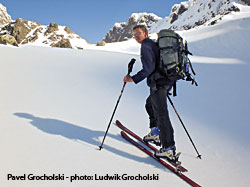 For Kant, time and space are not by definition things but are rather a subject; in order for something to exist (for us) we have to inject it with time and space. This surprising thesis explains at least some of our problems with time and space. It also forces us to admit that we are responsible for the difficulties that we find in the mountains. Kant observes that space does not come from experience, but rather it is a condition for all experience; furthermore, space is not an object, it is a condition for an object to exist. Similarly, time is not a thing that can be known from experience – all things exist in time. Kant’s theory is attractive and easy to believe in when you are sitting for a long time in the mountains during bad weather: we don’t know what these mountains are, but we know that they are there and each scene is surprising. For Kant, time and space are not by definition things but are rather a subject; in order for something to exist (for us) we have to inject it with time and space. This surprising thesis explains at least some of our problems with time and space. It also forces us to admit that we are responsible for the difficulties that we find in the mountains. Kant observes that space does not come from experience, but rather it is a condition for all experience; furthermore, space is not an object, it is a condition for an object to exist. Similarly, time is not a thing that can be known from experience – all things exist in time. Kant’s theory is attractive and easy to believe in when you are sitting for a long time in the mountains during bad weather: we don’t know what these mountains are, but we know that they are there and each scene is surprising.
|
|
